A key aim of this project was to produce a teaching approach, or framework for teaching dance technique to adults with with additional learning support needs. During the project seven dance practitioners were involved in delivering existing and new activities and approaches.
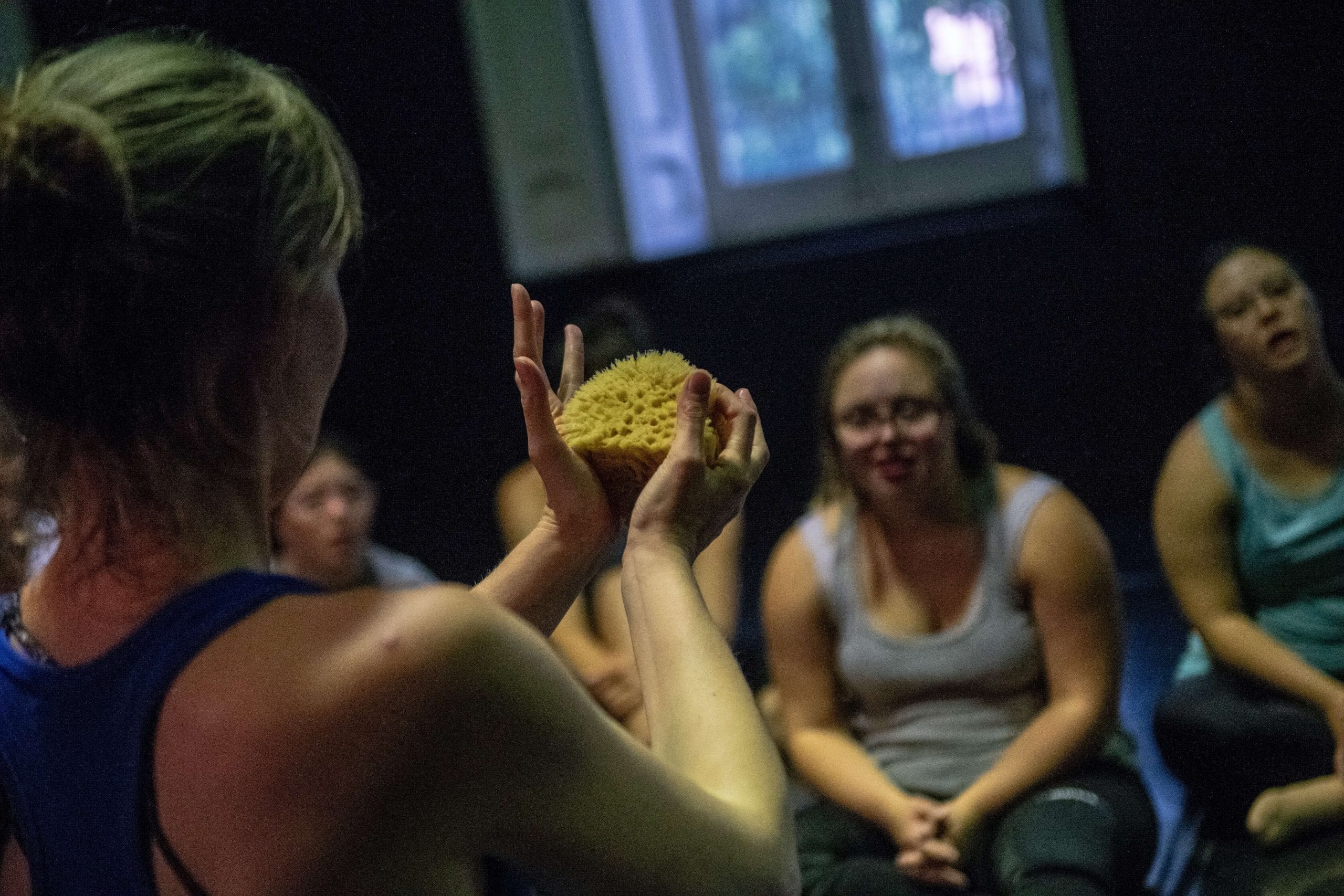
Through observing each other teach, reflecting upon the dancers’ responses and effectiveness of methods used, we have developed a set of guidelines. These acknowledge that each practitioner has their own teaching manner and preferences in terms of movement style and content. The intention is that they provide guidance on teaching approaches we have found to be most effective.
Teaching responsibilities and skills to develop
Creating a safe environment
Developing and maintaining a supportive environment is essential for learners to flourish. Making expectations clear of how we work together in the studio and what professionalism is, can help to develop a good working attitude and respect and consideration amongst the group.
Identify the level of your group
Within this, identify individual needs in the group and try to adapt activities to these needs. Find exercises that could be beneficial to each student.
Observation
Observe how the dancers are responding to the activity. For example, how individual dancers are coping emotionally as well as physically, any changes in the group dynamic and spotting any cues in behaviours that might escalate.
Be responsive
Respond to what is happening in the studio at that moment. If an activity is failing stop and find a different way to communicate the idea. Adapt content if appropriate; allow the emphasis or idea to be pulled in a different direction or increase challenge as needed. Respond to behavioural cues quickly to minimise their impact on the individual and group. Simply changing your or a dancer’s position in the room, gaining eye contact etc., can re-engage the group.
State the purpose of the exercise
Reveal what skills you are working on and the process you are using to achieve them.
Use several approaches for delivering each activity
This will help to appeal to different learning styles (see Delivery Approaches below).
At the same time, be aware of excessive cognitive overload
Too much information for some dancers can cause anxiety and disassociation. Use the appropriate amount of stimulus to serve your purpose. More information on Safe Practice can be found here
Help dancers to make connections
Even if the movement or exercise is familiar, you may need to break things down when in a new context. For example, when the orientation is changed, such as, from lying to standing.
Use empowering language
Choose positive words and phrases to describe what you want to see from your dancers, rather than telling them what you don’t want.
Reflective practice
Make time to reflect on your own practice and observe others teaching to facilitate this.
From Foundations find adaptations and developments
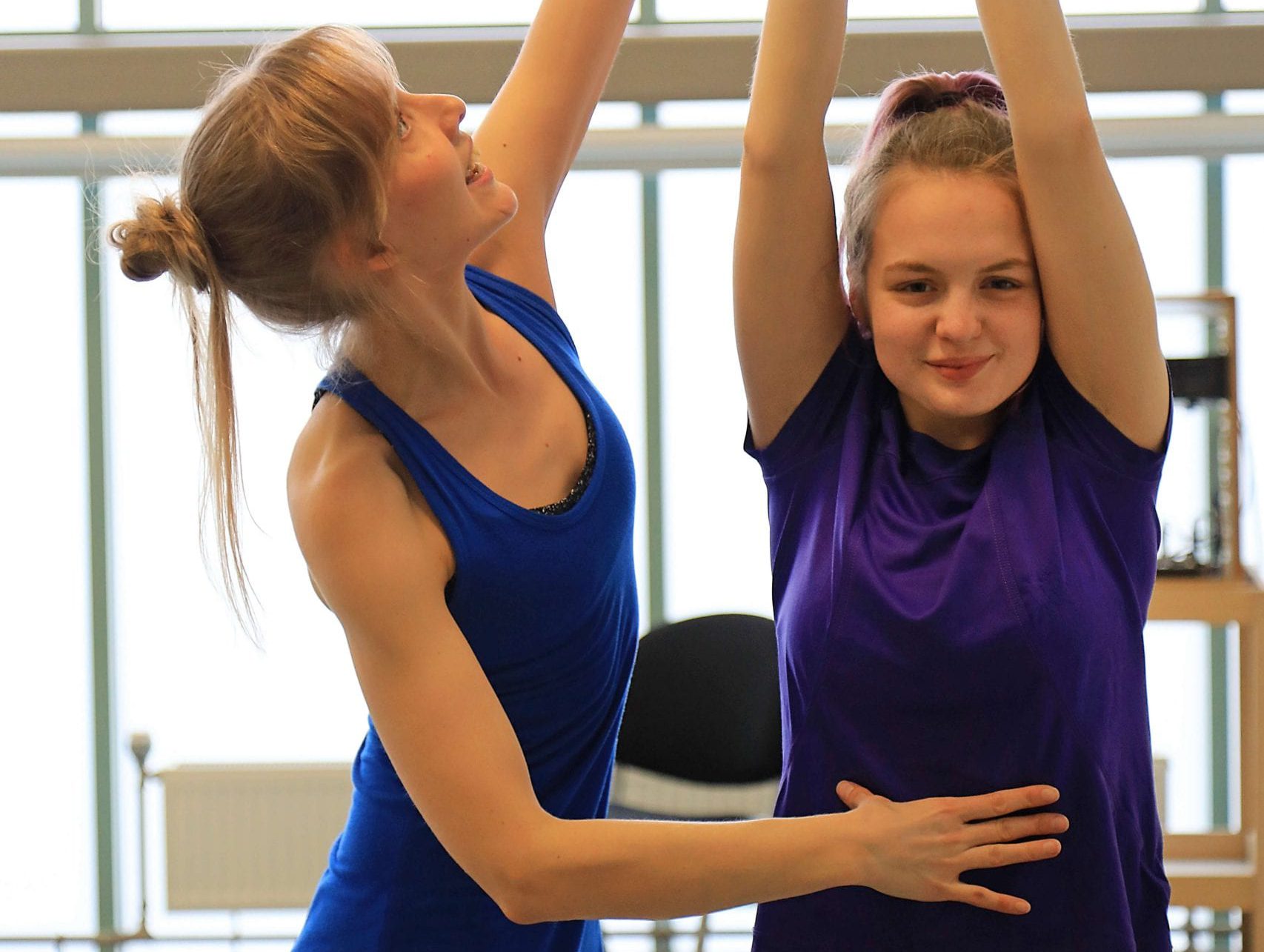
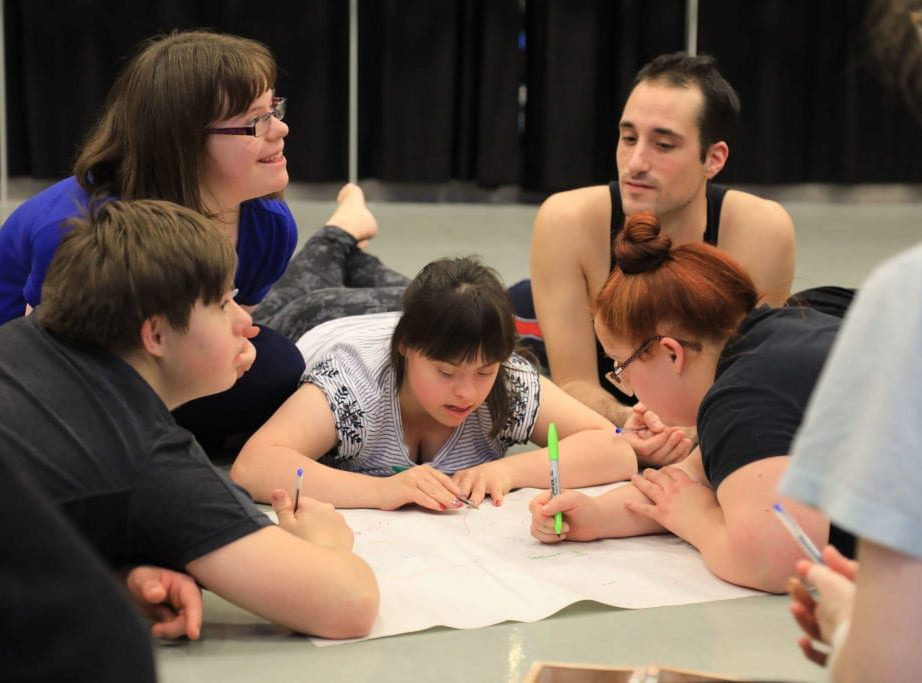
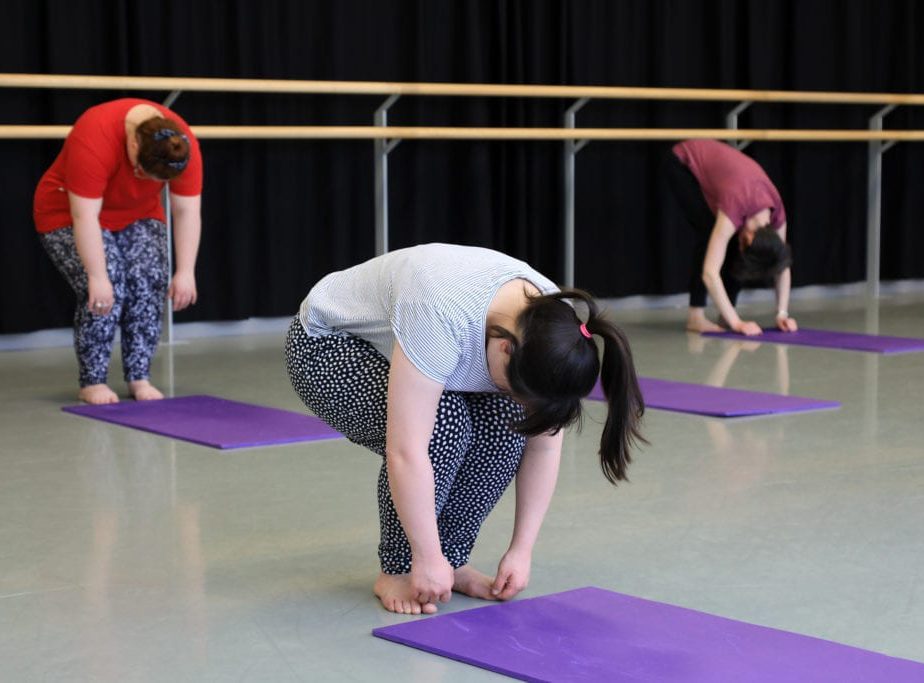
Skills to develop in your dancers:
Observational skills
Develop their ability to see what good movement and alignment is so they can self-correct.
Cognitive skills
Develop their ability to understand the concepts that underpin the skills they are learning.
Autonomous learners
Develop their ability to motivate themselves and become autonomous learners. For example, gradually hand over the responsibility for remembering exercises, correcting themselves and peers, creating and rehearsing independently, letting you know if they are uncomfortable or in pain.
This may take some time and finding the balance may be difficult. It is a learning process for the teacher and dancer as:
* if the dancer has difficulty linking cause and effect, taking on too much responsibility may cause anxiety or disassociation.
* dancers may not be able to articulate or let you know they are in pain or exhausted. Developing body awareness may help, but the teacher must also maintain awareness and responsibility.
* some dancers can be compulsive and not know when they need to stop. Again, the teacher must be vigilant.
Goal setting
Develop their ability to identify areas they need to improve upon and set goals related to them. This can help motivate, increase self awareness and develop autonomy.
Social skills
Develop in the dancers the ability to interact and work in a cooperative way with all peers creating a supportive and professional working environment.
Adaptability
Develop in the dancers the ability to adapt to changes that may occur in class and in the environment. For example, new teachers, new dancers in the group or being in a different studio.
Delivery Approaches
In the Teaching Guidelines for each activity we refer to the following methods of delivery:
Auditory
verbal instruction
use of voice (intonation, pace)
use of music/sounds
imagery delivered verbally
Visual
physical demonstration
visual imagery (picture, object)
Tactile
tactile cues given by self, peer, or teacher
physical objects
Kinaesthetic
experience how the movement feels e.g. resistance, pressure, effortless etc.
Feedback
We also used the following methods of feeding back to our dancers:
* verbal feedback from peer or teacher
* visual feedback from peer or teacher
* tactile feedback from peer or teacher
* visual feedback and self-correction
We found visual and tactile methods to be particularly important when introducing and re-capping activities. During interviews with the dancers they stated the best ways for them to learn a new movement or concept was through watching a physical demonstration and receiving tactile information. This view was corroborated by the dance practitioners. The physical demonstration and tactile approaches also needed to be revisited every time the activity was repeated until the movement or concept was internalised. This proved to be the same for set exercises and guided improvisations. For guided improvisations, the concept needed to be demonstrated before the dancers explored it, encouraging them to find their own movement patterns rather than copying the teacher’s.
Layering approach to building a sequence of movement
Explore the basic positions or concept first, using a range of methods to explain and communicate ideas – If using set movements, practise finding and moving into and out of them with correct alignment. If the dancers are creating the movement, give a clear directive and allow time for them to explore and decide how they will achieve it. Use a combination of verbal instruction, physical demonstration, visual props/objects, imagery (given verbally and visually), tactile (self, peer, teacher) etc., in the delivery.
Link sections together to slowly build a sequence – If creating a set sequence, this may build and develop over a number of sessions.
Gradually add complexity – Introduce elements to focus on one at a time to avoid overload, e.g., directions, eye focus, quality of movement, variations in speed, musicality, arranging and performing it with one or more partners. Encourage your dancers to set their own level of challenge by adding more or sticking to one or two.
Gradually shift responsibility to the dancers – For example, remembering the sequence with fewer and eventually no prompts. This develops autonomy and movement memory in the dancers and allows the teacher to observe and correct more effectively. It may be appropriate to ensure each dancer knows the sequence by doing it alone without their peers.
The approach to the project: a biopsychosocial ecological approach
Purely scientific approaches to health have influenced Western thinking for many years, and have offered convenient ‘ways of knowing’ that are objective, explicit and rigorous. This thinking originates in the Descartes’ dualistic approach and a reductionist mechanistic parting of the body and mind (and soul) into separate entities (Arcangeli, 2008; Havelka, Lucanin & Lucanin, 2009). This practice and biomedical approach to health however became questionable once non-infectious chronic conditions were recognised and understood and in 1948 the World Health Organisation defined health as “a state of complete physical, mental, and social well-being and not merely the absence of disease or infirmity” (WHO, 2006a, 2006b).
Today, psychological and social risk factors within health and well-being are commonly considered by applying a biopsychosocial model developed by Engel (1980) that focuses on the interplay between genes, environment, and physical and psychosocial factors (Havelka et al., 2009; Rogers, 2018). In line with Engel’s work, the biopsychosocial model was further developed to include the cultural aspects that influence a research context (Gomm & Davies, 2000). Engel and Gomm and Davies’ approaches also interlink and sit well with Bronfenbrenner’s ecological framework (1979). This considers macrosystems (cultural environments), exosystems (the setting), microsystems (the individual) and chronosystems (transitions over time) as influencers across lifespan development (Bronfenbrenner & Morris, 2007; Lehman, David & Gruber, 2017).
Combining biopsychosocial and ecological systems provided a biopsychosocial ecology that underpinned this project. This was of particular importance as the focus was to enhance both the dancers’ experiences and outcomes whilst enabling each dancer to fulfil their potential within their teaching, learning and training environment for dance. The interactions of these systems and the approach within dance are visually represented in the figure below.
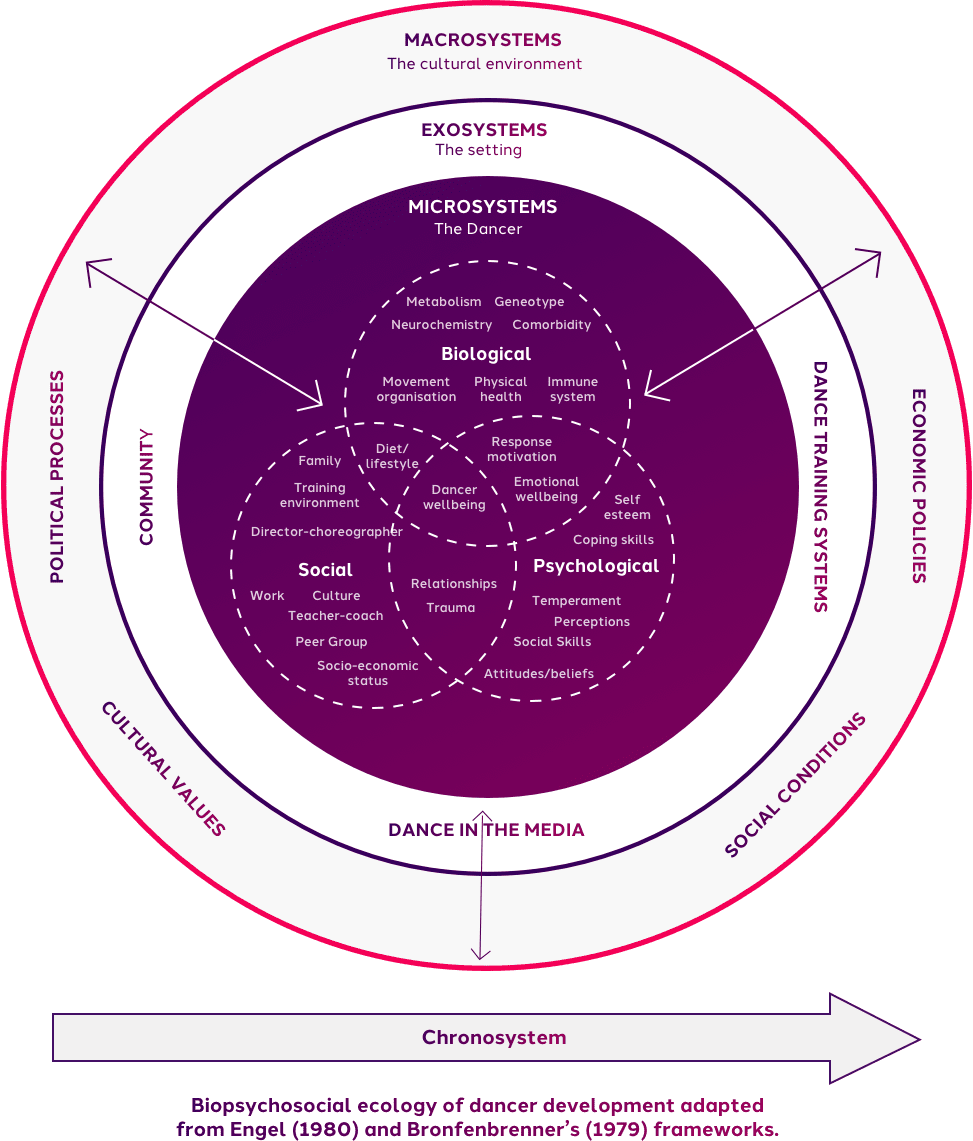
The European Commission support for the production of this publication does not constitute an endorsement of the contents which reflects the views only of the authors, and the Commission cannot be held responsible for any use which may be made of the information contained therein.





